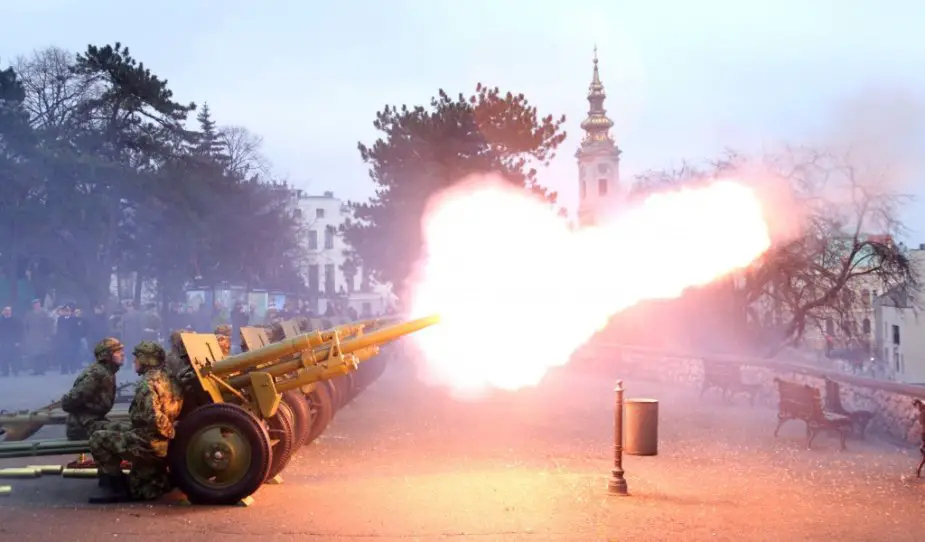Breaking news
Serbian army to be upgraded.
Serbia celebrated its Army Day on 23 April. The government wants to increase its military budget, currently set at 600 million euro. And, hence, modernize and reinforce the army.

Artillery salute on Serbian Army Day (Picture source: Serbian MoD)
The main official ceremony took place in Belgrade in front of ministers. Defense minister Aleksandar Vulin said in a speech that Serbia is determined to continue improving military capacities and education facilities, as well as the living standard of its officers.
Serbian President Aleksandar Vucic said in a speech that "the country will strive to have a modernly equipped soldier, and is ready to invest, but will also expect results". Currently the country allocates around 600 million euros for its army. This amount will be increased thanks to the good economic situation. "The military holiday is marked to strengthen the principle of patriotism, countering fascism and anti-Semitism, and to achieve understanding and cooperation, along with acknowledging all cultural differences in our country and the region for the sake of future and peace," he said.
Serbia observes the Army Day on April 23 to mark the beginning of the Second Serbian Uprising against the Ottoman empire in 1815 that led to the establishment of the Principality of Serbia in 1817.
The Army (land) is the largest component of the Serbian Armed Forces. There are approximately 44,000 active members. The army is composed entirely of professionals and volunteers following the suspension of mandatory military service on January 1, 2011. The 2nd, 3rd and 4th army brigades are tasked with securing the 5 km (2.5 mi) wide Ground Safety Zone (GSZ) along the administrative line between Central Serbia and the disputed territory of Kosovo. The GSZ extends 384 km long and covers a total area of about 1,920 km². There are over 20 camps and security checkpoints in the zone.
Following the 2006 reorganization, the Serbian Army consists of six primary brigades. The four army brigades are larger than a conventional modern brigade, their size is more akin to a division. Each army brigade consists of ten battalions: one command battalion, one armored battalion, two mechanized battalions, two infantry battalions, one self-propelled artillery battalion, one air defense battalion, one engineering battalion and one logistics battalion. The only exception is the 1st army brigade, being one infantry battalion short.
The air force fleet consists of Russian combat aircraft, consisting of a number of MiG-21s, and MiG-29s. Serbia is looking to replace its aging fleet with new multi-role combat aircraft. Before its demise, the former Yugoslav Air Force was developing the Novi Avion project which was intended as a replacement. The project was canceled in 1991 due to the collapse of Yugoslavia. Serbia, as the largest succeeding nation of Yugoslavia, took possession of the entire Yugoslav Air Force inventory. After the Agreement on Sub-Regional Arms Control was enacted in 1996, dozens of J-22, J-21 and G-2s have been withdrawn from service. The air force operates from three major air bases, the 204th Batajnica Air Base and 98th Lađevci Air Base and Niš Air Base.
The 250th Air Defense Missile Brigade is a joint tactical unit of Serbian Air Force and Air Defence. It consists of three rocket missile air defense battalions, three self-propelled rocket missile air defense battalions and a command company.


























